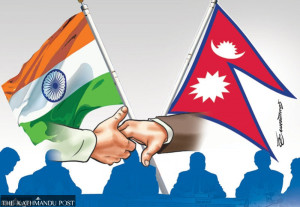Columns
Our waste, our responsibility
We must remember that our successes and failures in managing waste mirror the society we live in.
Dhundi Raj Pathak
Solid waste management (SWM) is a significant challenge for municipalities in Nepal, including those in Kathmandu Valley. The situation is getting worse, as the volume of solid waste has increased over the past few years in the municipalities of the valley due to rapid urbanisation and economic development. A study I conducted in 2022 showed that 18 valley municipalities generate over 1262 tonnes of municipal solid waste (MSW) per day, which equals 25 percent of the total MSW in Nepal. Moreover, 15 percent remains uncollected in the valley. The Banchare Danda landfill site, designed to dispose of only residual waste (i.e. 25-30 percent), is in operation. Around 60-65 percent of total MSW, collected in mixed form, goes there at present due to the absence of basic facilities for waste treatment, recycling and recovery, aided by a deeply rooted misperception of the public about waste.
Pandemic's fallout
The Covid-19 pandemic did not only increase household waste but also expanded the biodegradable fraction. It is reported that the biodegradable fraction in household waste rose from 65 to 75 percent on average during the pandemic. This indicates that the waste has a high potential for composting and can be managed at sources depending upon the cities' urbanisation pattern, the government's priority, and people's civility. Over the last 30 years, people's perception of waste has undergone change, as there have been frequent mentions of the 3Rs–reduce, reuse and recycle. But it's mostly all talk and no action.
The first step towards solid waste management is to make waste producers responsible for the waste they produce. Source segregation and household composting is the best way, but it needs willpower and technical knowledge to handle it effectively. The easiest, cheapest and most environmentally friendly solution is home composting, where solid organic waste is reduced and reused, and its nutrients are recycled into fertiliser, which is one of the keys to a circular economy. Home composting also reduces costs, energy consumption, and GHG emission. Although the social and economic disruption of the pandemic is devastating, with every cloud, there is always a silver lining.
After initiating the improvement of the environment in the Bagmati River Basin, several initiatives are in place to inform people of their responsibility for managing the waste they produce according to the polluter pays principle. People, planners and governments all started to rethink ways to convert waste into resources in a practical way and conducted the 3R training on a demand basis for waste management and promoting urban farming, which has helped the waste producers to participate more actively in composting practices at the source. What we talked about waste segregation and waste of resources over the last three decades translated into action visibly in Kathmandu Valley after the pandemic.
The pandemic and the lockdowns gave people more time to spend at home and rediscover their passion for household composting. People started to convert kitchen waste, fallen leaves and grass clippings into "black gold", which was further used to enrich the soil in the garden. It also enhanced rooftop/yard gardening and urban farming to produce healthy fruits and vegetables, a perfect example of the circular economy mentioned above. Such initiations help manage the main fractions of urban waste at sources to create resources by activating the community, which ultimately prevents littering and improves the environment of the cities and river system.
Another study I conducted shows how at least 5 percent of households use household composting, where nearly 40 tons per day of household solid organic waste is being managed at the source in the municipalities of Kathmandu Valley. Based on the author's analysis, municipalities of the valley spend about Rs8,000 for collecting and dumping 1 ton of solid waste. Based on this fact, nearly Rs300,000 can be saved daily in Kathmandu Valley through household composting, which produces at least 9 to 10-ton compost fertiliser daily, and its monetary value will be about Rs300,000.
Changing farming methods
Under the devastating circumstances in almost all sectors, rooftop gardening or urban farming has emerged as a viable way to provide sufficient fresh and safe food to people by utilising the fertilisers produced from household solid organic waste. Amid the significant challenges caused by the pandemic to the supply of healthy vegetables, many people living in the municipalities of Kathmandu Valley were found to have engaged in rooftop gardening and urban farming as a means of livelihood, survival and healthy fruits and vegetables. Most households reported that they produced vegetables and fruits for three to six months, which is more significant in rural areas due to prior knowledge and practices related to urban agriculture.
The practice is also growing in urban centres, especially after the pandemic, because of high prices for food and the increased use of pesticides in imported fruits and vegetables. Hence, household composting practices have become helpful for managing organic waste at sources and promoting rooftop/urban farming. Moreover, households have saved significant amounts of money just due to the utilisation of their free time and skill. Also, they can produce organic and healthy vegetables on the rooftop and yard.
Change begins at home
Regardless of the technology we adopt, waste segregation at the source should be mandatory. Household composting is effective for small municipalities but could be extended up to 10 percent of households in haphazardly urbanised cities like Kathmandu, where many families live in a single house with limited open space, and the city produces a large volume of waste. Moreover, such activities are still questionable given their sustainability in the post-pandemic everyday situations and may have less impact on overall waste management in the valley. Therefore, besides promoting this household composting, it is important to invest in municipal-level waste treatment and recovery infrastructures to recover optimum resources.
For example, anaerobic digestion of source-sorted bio-waste could be a better option from an economic and environmental perspective in highly populated urban centres. It has been initiated in Nepal, but it needs customisation and improvement in technology, ensuring quality feeding materials and marketing of end products for sustainability. Increasing the recycling rate is the preferred option for non-degradable dry waste, but this requires more investment into waste sorting, processing and recycling infrastructure.
Finally, waste producers and managers must remember that waste management is not only an infrastructural or technological project but a mirror of society. Awareness and behavioural change without infrastructure remain propaganda, and infrastructure without people's behavioural change is just a white elephant. In the past three decades, there has either been just propaganda without investment in infrastructure or just infrastructure insisted by donors without understanding recipients' capacity and the beneficiaries' behaviour. This situation needs to change for sustainable waste management in Nepali cities.




 11.12°C Kathmandu
11.12°C Kathmandu

.jpg&w=200&height=120)











%20(1).jpg&w=300&height=200)

